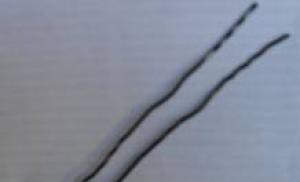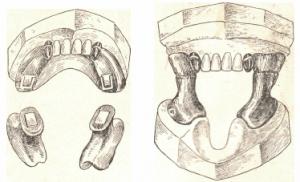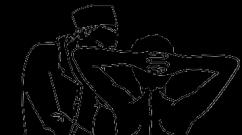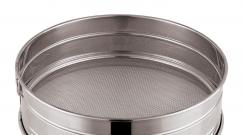The vacuum bomb is the country's strongest non-nuclear weapon. What is a vacuum bomb and what is its principle of operation
On September 11, 2007, the most powerful non-nuclear weapon in the world was successfully tested in Russia. The Tu-160 strategic bomber dropped a bomb weighing 7.1 tons and with a capacity of about 40 tons in TNT equivalent with a guaranteed radius of destruction of all living things of more than three hundred meters. In Russia, this ammunition was nicknamed "The Pope of all bombs." It belonged to the class of explosive munitions.
The development and testing of a munition called "The Pope of All Bombs" is Russia's answer to the United States. Until that moment, the most powerful non-nuclear weapon was considered american bomb GBU-43B MOAB, which the developers themselves called the "Mother of all bombs." The Russian "dad" surpassed the "mother" in all respects. True, American ammunition does not belong to the class of vacuum ammunition - it is the most common land mine.
Today, volumetric explosion weapons are the second most powerful after nuclear weapons. What is its principle of action based on? What explosive substance makes vacuum bombs equal in strength to thermonuclear monsters?
The principle of operation of ammunition volumetric explosion
Vacuum bombs or volume explosion munitions (or volumetric detonating munitions) are a type of ammunition that works on the principle of creating a volume explosion, known to mankind for many hundreds of years.
In terms of their power, such ammunition is comparable to nuclear weapons. But unlike the latter, they do not have a factor of radiation contamination of the area and do not fall under any of the international conventions regarding weapons of mass destruction.
Man has long been acquainted with the phenomenon of a volumetric explosion. Such explosions quite often happened in flour mills, where the smallest flour dust accumulated in the air, or in sugar factories. Yet great danger are similar explosions in coal mines. Volumetric explosions are one of the most terrible dangers that lie in wait for miners underground. Coal dust and methane gas accumulate in poorly ventilated faces. For initiation powerful explosion under such conditions, even a small spark is sufficient.
A typical example of a volumetric explosion is the explosion of household gas in a room.
The physical principle of operation, according to which a vacuum bomb works, is quite simple. It usually uses an explosive with a low boiling point, which is easily converted into gaseous state even when low temperatures(for example, acetylene oxide). To create an artificial volumetric explosion, you just need to create a cloud from a mixture of air and combustible material and set it on fire. But this is just in theory - in practice, this process is quite complicated.
At the center of the volumetric blast munition is a small demolition charge consisting of a conventional explosive (HE). Its function is to spray the main charge, which quickly turns into a gas or aerosol and reacts with atmospheric oxygen. It is the latter that plays the role of an oxidizing agent, so a vacuum bomb is several times more powerful than a conventional one with the same mass.
The task of the explosive charge is the uniform distribution of combustible gas or aerosol in space. Then the second charge comes into play, which causes the detonation of this cloud. Sometimes multiple charges are used. The delay between the firing of two charges is less than one second (150 msec).
The name "vacuum bomb" does not accurately reflect the principle of operation of this weapon. Yes, after the detonation of such a bomb, there really is a decrease in pressure, but we are not talking about any kind of vacuum. In general, volumetric explosion ammunition has already generated a large number of myths.
As an explosive in bulk ammunition, various liquids (ethylene and propylene oxides, dimethylacetylene, propyl nitrite), as well as powders of light metals (most often magnesium) are usually used.
How does this weapon work?
When a volumetric explosion ammunition is detonated, a shock wave occurs, but it is much weaker than in the explosion of a conventional explosive such as TNT. However, the shock wave during a volumetric explosion is much longer than when conventional ammunition is detonated.
If we compare the effect of a conventional charge with a hit by a pedestrian with a truck, then the effect of a shock wave during a volumetric explosion is a skating rink that not only slowly passes over the victim, but also stands on it.
However, the most mysterious damaging factor of bulk ammunition is the wave reduced pressure, which follows the shock front. There are a large number of the most controversial opinions about its action. There is evidence that it is the zone of low pressure that has the most destructive effect. However, this seems unlikely, as the pressure drop is only 0.15 atmospheres.
Divers in the water experience a short-term pressure drop of up to 0.5 atmospheres, and this does not lead to rupture of the lungs or prolapse of the eyes from the sockets.
Volumetric explosion ammunition is more effective and dangerous for the enemy due to another feature. The blast wave after the explosion of such ammunition does not go around obstacles and is not reflected from them, but “flows” into every crack and shelter. Therefore, hiding in a trench or dugout, if an aviation vacuum bomb is dropped on you, will definitely not work.
The shock wave travels along the surface of the soil, so it is excellent for detonating anti-personnel and anti-tank mines.
Why didn't all ammunition become vacuum
The effectiveness of volumetric explosion ammunition became apparent almost immediately after the start of their use. The detonation of ten gallons (32 liters) of sprayed acetylene produced an effect equal to the explosion of 250 kg of TNT. Why is everything modern ammunition did not become voluminous?
The reason lies in the features of a volumetric explosion. Volumetric detonating ammunition has only one damaging factor - a shock wave. Neither cumulative nor shrapnel action they do not produce on purpose.
In addition, their ability to destroy the barrier is extremely small, since their explosion is of the “burning” type. However, in most cases, a "detonation" type explosion is needed, which destroys obstacles in its path or throws them away.
An explosion of bulk ammunition is possible only in the air, it cannot be produced in water or soil, since oxygen is needed to create a combustible cloud.
For the successful use of volumetric detonating ammunition, weather conditions are important, which determine the success of the formation of a gas cloud. It makes no sense to create volumetric small-caliber ammunition: aviation bombs weighing less than 100 kg and shells with a caliber of less than 220 mm.
In addition, for bulk ammunition, the trajectory of hitting the target is very important. They are most effective when hitting an object vertically. On slow-motion shots of the explosion of a bulky ammunition, it can be seen that the shock wave forms a toroidal cloud, best of all when it "spreads" along the ground.
History of creation and application
Volumetric explosion ammunition (like many other weapons) owes its birth to the unkind German weapons genius. During the last world war, the Germans paid attention to the power of explosions that occur in coal mines. They tried to use the same physical principles for the production of a new type of ammunition.
Nothing real came out of them, and after the defeat of Germany, these developments came to the Allies. They were forgotten for decades. The Americans were the first to remember volumetric explosions during the Vietnam War.
In Vietnam, the shtatovtsy widely used combat helicopters with which they supplied their troops and evacuated the wounded. A rather serious problem was the construction of landing sites in the jungle. Clearing the site for the landing and takeoff of only one helicopter required the hard work of an entire sapper platoon for 12-24 hours. It was not possible to clear the sites with the help of conventional explosions, because they left behind huge funnels. It was then that they remembered about the ammunition of a volumetric explosion.
A combat helicopter could carry several such ammunition on board, the explosion of each of them created a platform quite suitable for landing.
It also proved to be very effective combat use voluminous ammunition, they had the strongest psychological effect on the Vietnamese. It was very problematic to hide from such an explosion even in a reliable dugout or bunker. The Americans successfully used volumetric explosion bombs to destroy partisans in the tunnels. At the same time, the development of such ammunition was also taken up in the USSR.
The Americans equipped their first bombs various types hydrocarbons: ethylene, acetylene, propane, propylene and others. In the USSR, they experimented with a variety of metal powders.
However, the first-generation volumetric explosion ammunition was quite demanding on the accuracy of bombing, highly dependent on weather conditions, and did not work well at low temperatures.
To develop second-generation ammunition, the Americans used a computer on which they simulated a volumetric explosion. At the end of the 70s of the last century, the UN adopted a convention banning these weapons, but this did not stop its development in the USA and the USSR.
Today, third-generation volume explosion munitions have already been developed. Work in this direction is being actively carried out in the USA, Germany, Israel, China, Japan and Russia.
"The Daddy of All Bombs"
It should be noted that Russia is among the states that have the most advanced developments in the field of creating weapons of a volumetric explosion. vacuum bomb increased power, tested in 2007, is a clear confirmation of this fact.
Until that time, the American aerial bomb GBU-43 / B, weighing 9.5 tons and 10 meters long, was considered the most powerful non-nuclear munition. The Americans themselves considered this guided bomb not very effective. Against tanks and infantry, in their opinion, it is better to use cluster munitions. It should also be noted that the GBU-43 / B does not apply to bulk ammunition, it contains conventional explosives.
In 2007, after testing, Russia adopted a high-yield vacuum bomb. This development is kept secret, neither the abbreviation assigned to the ammunition, nor the exact number of bombs that are in service with the Russian Armed Forces are known. It was stated that the power of this superbomb is 40-44 tons of TNT.
Due to the large weight of the bomb, only an aircraft can be a means of delivering such ammunition. The leadership of the Russian armed forces said that nanotechnology was used in the development of the ammunition.
If you have any questions - leave them in the comments below the article. We or our visitors will be happy to answer them.
The media proudly reported that Russia had successfully tested the most powerful non-nuclear bomb. The bomber dropped more than seven tons of ammunition. The power of the bomb was a little less than forty tons. The Ministry of Defense guaranteed the destruction ...
The media proudly reported that Russia had successfully tested the most powerful non-nuclear bomb. The bomber dropped more than seven tons of ammunition. The power of the bomb was a little less than forty tons.
The Ministry of Defense guaranteed the destruction of all living beings within a radius of 300 meters. Even the flies will die. The bomb received a proper name - "Dad of all bombs."
Such an uncomplicated arms race. The Americans called their non-nuclear bomb "The Mother of All Bombs". So the answer is correct. But "Papa" thoroughly dug "Mom". The American "Mom" has nothing to do with the vacuum bomb. This is an ordinary landmine of great power.
Vacuum ammunition is a bomb that works on the principles of a volumetric explosion, known for a long time. The absence of radiation damage removed the bomb from the convention on weapons of mass destruction.
But the population is familiar with the vacuum explosion. An ordinary flour mill, with an accumulation of microscopic dust that is not visible to the armed eye - our good example. These accumulations can explode so much that it doesn’t seem enough. The destructive power is enormous.
Coal mines are a potential hazard. No matter how it works exhaust ventilation, dust accumulates all the same. There is also methane in the mines. The initiation of an explosion is the slightest spark.
The explosion itself is quite simple. An explosive substance (BB) is used, which easily turns into a gas. Acetylene oxide is suitable. We create an air cloud, add combustible material, set it on fire... Theory is always easier than practice.
It's hard to do this. You will have to put an explosive substance (BB) into the bomb, spraying the main charge. BB, having reacted with air (oxygen), turns a vacuum bomb into an explosive monster.
It is more powerful than any other bomb. "Vacuum bomb" ... - it's not correct somehow. Only the pressure is decreasing. The shock wave is weak. But it has a lasting effect. Imagine that a car hit a pedestrian. So a vacuum bomb is a skating rink that will drive over a pedestrian and stand on it.

The blast wave of a vacuum ammunition does not destroy the obstacle, but flows around it. It turns out an explosion according to the type of combustion. And during the battle you need a destructive impact force. Therefore, vacuum-type bombs are not used everywhere.
But it is impossible to escape from it. The wave flows into all the cracks. The dugout, the wall of the house ... Nothing saves. But the bomb is an excellent sapper. The blast wave does not go into the ground. Moving on the surface, it explodes any mines, clearing the area.
The shock wave of the bomb is the only factor in defeat. In addition, for the explosion, she needs oxygen, which is in the air. This means that bombs must be carried by helicopters or planes. There are many barriers to use.
Application history
The Germans tried to use the explosions that occur in coal mines as a new weapon. But until the end, due to the circumstances of the offensive Soviet army, did not finish the project.
Americans are meticulous guys. While fighting in Vietnam, they realized that they needed numerous landing sites for helicopters. Construction required the presence of manpower in the jungle. Fuck? The Pentagon quickly sorted through the documents of the Nazis, and found the right option.
The helicopter carried shells. If necessary, a bomb was dropped and the explosion built a new helipad. In addition, it is impossible to hide from the explosion of a vacuum bomb. The psychological effect was very strong.
So the Americans smoked the Vietnamese rebels out of the tunnels. The first generation of vacuum bombs was capricious. Wanted special conditions bombing, weather, temperature conditions.
The UN decided to ban such weapons, but the US and the USSR wanted to spit on the UN. Today, weapons are being developed by several other countries that do not recognize the UN ban.
"The Daddy of All Bombs"
The test of 2007 confirmed that Russia is ahead of the rest. The bomb was adopted by the troops. But since the weapon is classified as secret, nothing is known about it.
The only thing reported by the Ministry of Defense is the capacity of 40-44 tons of TNT. And the fact that nanotechnology was used in the development.
Vacuum or thermobaric bombs are practically as powerful as nuclear weapons. But unlike the latter, its use does not threaten radiation and global environmental catastrophe.
coal dust
The first test of a vacuum charge was carried out in 1943 by a group of German chemists led by Mario Zippermayr. The principle of operation of the device was prompted by accidents at flour mills and in mines, where volumetric explosions often occur.
That is why ordinary coal dust was used as an explosive. The point is that by this time Nazi Germany there was already a serious shortage of explosives, primarily TNT. However, it was not possible to bring this idea to real production. In fact, the term "vacuum bomb" with technical point view is not correct. In fact, this is a classic thermobaric weapon in which fire spreads under high pressure. Like most explosives, it is a fuel-oxidant premix. The difference is that in the first case, the explosion comes from a point source, and in the second, the flame front covers a significant volume. All this is accompanied by a powerful shock wave. For example, when on December 11, 2005, a volumetric explosion took place in the empty storage of an oil terminal in Hertfordshire (England), people woke up 150 km from the epicenter from the fact that glass rattled in the windows.
Vietnamese experience
For the first time, thermobaric weapons were used in Vietnam to clear the jungle, primarily for helipads. The effect was stunning. It was enough to drop three or four such volumetric explosive devices, and the Iroquois helicopter could land in the most unexpected places for the partisans. In fact, these were 50-liter high-pressure cylinders, with a brake parachute that opened at a thirty-meter height. Approximately five meters from the ground, the squib destroyed the shell, and under pressure a gas cloud formed, which exploded. At the same time, the substances and mixtures used in air-fuel bombs were not something special. These were ordinary methane, propane, acetylene, ethylene and propylene oxides.
It soon became clear experimentally that thermobaric weapons have a huge destructive force in confined spaces such as tunnels, caves, and bunkers, but not suitable for windy weather, underwater or on high altitude. There were attempts to use thermobaric projectiles in the Vietnam War large caliber however, they were not effective.
thermobaric death
On February 1, 2000, immediately after another test of a thermobaric bomb, Human Rights Watch, a CIA expert, described its action as follows: “The direction of a volumetric explosion is unique and extremely life-threatening. First, people who are in the affected area are affected by high pressure burning mixture, and then - a vacuum, in fact, a vacuum tearing the lungs. All this is accompanied by severe burns, including internal ones, as many people manage to inhale the fuel-oxidant premix. ”However, with the light hand of journalists, this weapon was called a vacuum bomb. Interestingly, in the 90s of the last century, some experts believed that people who died from the “vacuum bomb” seemed to be in space. Like, as a result of the explosion, oxygen instantly burned out, and for some time an absolute vacuum was formed. So, military expert Terry Garder from Jane's magazine, reported on the use Russian troops"vacuum bomb" against Chechen fighters near the village of Semashko. His report says that the dead had no external injuries, and died from ruptured lungs.
Second after the atomic bomb
Seven years later, on September 11, 2007, they started talking about the thermobaric bomb as the most powerful non-nuclear weapon. “The test results of the created aviation munition showed that it is commensurate with nuclear munitions in terms of its effectiveness and capabilities,” said the former head of the GOU, Colonel General Alexander Rukshin. It was about the most destructive innovative thermobaric weapon in the world. The new Russian aviation ammunition turned out to be four times more powerful than the largest American vacuum bomb. Pentagon experts immediately declared that the Russian data was exaggerated, at least twice. And the press secretary of US President George W. Bush, Dana Perino, at a briefing on September 18, 2007, when asked how the Americans would respond to the Russian attack, said that she had heard about it for the first time. Alexander Rukshin spoke. He wrote: “The Russian military and scientists were pioneers in the development and use of thermobaric weapons. This new story weapons." If nuclear weapon is a priori a deterrent due to the possibility radioactive contamination, then super-powerful thermobaric bombs, according to him, will most likely be used by the "hot heads" of generals from different countries.
Inhuman killer
In 1976, the United Nations adopted a resolution in which it called volumetric weapons "an inhumane means of warfare that causes undue suffering to people." However, this document is not mandatory and does not explicitly prohibit the use of thermobaric bombs. That is why from time to time there are reports of "vacuum bombing" in the media. So on August 6, 1982, an Israeli plane attacked Libyan troops with American-made thermobaric ammunition. More recently, the Telegraph reported on the use of a high-explosive air-fuel bomb by the Syrian military in the city of Raqqa, as a result of which 14 people were killed. Although this attack was not carried out chemical weapons, the international community demands a ban on the use of thermobaric weapons in cities.
The emergence of a fundamentally new type of weapon or military equipment often gives rise to a lot of rumors. And most of them are associated with an exaggerated assessment of the capabilities of the "wonder weapon". This is usually due to the tendency of journalists to sensationalize against the background of the scarcity of information about the product.
The same situation arose with the new volume explosion ammunition. A sample of this weapon was successfully tested on September 11, 2007. The bomb dropped from the Tu-160 turned out to be the most powerful of the non-nuclear ones. The "experts" from the media have given it the mysterious name "High Yield Aircraft Vacuum Bomb".
Operating principle
The incorrect term "vacuum" arose due to the short-term (hundredths of a second) "burnout" of oxygen. In fact, the pressure drop does not exceed 0.5 atmospheres, which is safe for humans. The resulting rarefaction zone is instantly filled with combustion products. And the striking factor is not “suction by a vacuum”, but a shock wave.
The very principle of a volumetric explosion is the detonation of a combustible substance sprayed in a certain volume of air. The area of contact with air of all aerosol particles is much larger than that of a substance in its usual form. And the composition of the air includes oxygen - an oxidizing agent necessary for an explosion. Such "mixing" of a combustible substance with an oxidizing agent greatly increases the power of the explosion.
Thanks to this principle, the new weapon was named volumetric explosion ammunition (BOV).
In comparison with an explosive (XV) such as TNT, CWA has 5-8 times more power. However, due to the low density of the atomized substance, the CWA explosion rate is less. For CWA it is 1500–2000 m/s versus 6950 m/s for TNT. Because of this, its ability to crush obstacles (blasting effect) is lower.
IN Everyday life volumetric explosion occurs in the form of accidents in enterprises. A high concentration of combustible dust or vapors in the air creates the prerequisites for an explosion. Such completely peaceful substances include wood, coal, sugar dust or gasoline vapors.
The implementation of this idea for military purposes is as follows. A projectile or bomb delivers a combustible (explosive) substance to the target and sprays it there. After 100–150 ms, the aerosol cloud is detonated. It is important that at this moment the explosive cloud fills the largest space, maintaining the desired concentration.

As a sprayed combustible substance, ethylene or propylene oxide, metal powders, a mixture of MAPP are used. The latter includes methylacetylene, allene (propadiene) and propane. Ethylene or propylene oxides are effective but poisonous and difficult to handle. For military purposes, it is easier to use volatile gasoline with the addition of aluminum-magnesium powder.
Benefits of BOV:
- greater than that of a blasting explosive, the power of the explosion;
- the ability of an aerosol cloud to penetrate shelters;
- with a power comparable to tactical nuclear weapons, do not lead to radioactive contamination.
The disadvantages include:
- instability of the aerosol cloud in unfavorable weather conditions;
- having a single damaging factor- shock wave;
- low effectiveness against fortifications;
- explosive weight limit. For the required effectiveness of the ammunition, it must be at least 20 kg.
These features will not allow BOV to replace traditional ammunition.
Its use is expedient against enemy manpower in fortifications, natural shelters or urban conditions.
Thermobaric ammunition
Along with BOV, thermobaric ammunition (TBB) is widely known. With the same effect of explosive oxidation in the air, the principle of operation of such ammunition differs from the BOV.
Due to the detonation of the central bursting charge, the detonation of the thermobaric mixture occurs. The resulting blast wave provides rapid mixing with air and combustion of the thermobaric composition. TBB uses a mixture based on nitroesters and aluminum powder.
The solid version of the mixture is A-3 (65% RDX, 5% wax and 30% aluminum powder).
Advantages of TBB over volumetric detonating:
- no restrictions on the mass of explosives. This made it possible to create fire weapons for arming individual military personnel;
- insensitivity to atmospheric phenomena.
Several types of weapons have been developed under the TBB. The most common ones are:
- reactive infantry flamethrower"Bumblebee";
- shots for RPG-7;
- grenades for underbarrel grenade launcher.
At the same time, work continues on the creation of high-capacity thermobaric munitions.
History of creation and application
The first attempt to use the volumetric explosion effect was the Black Fog project. In 1944, the engineers of Nazi Germany intended to create a BOV in the interests of air defense. It was planned to form an aerosol cloud on the way of enemy aircraft. Its setting and detonation were to be carried out by Junkers Ju-88 aircraft. However, this would require much more cars than to be destroyed. Until the end of the war, the project could not be implemented.

The idea of a volumetric explosion was further developed in the United States. In the early 70s, the first generation BOV was developed - the 500-pound cluster bomb CBU-55. This ammunition was used from a multi-purpose helicopter.
The second generation BOVs were the 500lb BLU-95 and the 2000lb BLU-96.
The latter was capable of inflicting serious damage to the ship within a radius of up to 130 m.
Such aerial bombs were used during Vietnam War. With their help, American aviation solved the following tasks:
- clearing places for landing helicopters;
- destruction of the enemy in shelters;
- making passages in minefields.
Similar developments were carried out in the USSR. As a result, the ODAB-500P air bomb was created. In Afghanistan, this was an effective remedy against the dushmans who were hiding in the mountains. To reduce the dispersion of the aerosol cloud, they were used together with smoke bombs in a ratio of 3:1.

In 1999, an aerial bomb of a volumetric explosion was used against Chechen fighters who had taken refuge in the Dagestan village of Tando. In addition to heavy losses, the enemy received huge psychological damage.
Our response to "partners"
In 2003, the GBU-43 / B Massive Ordnance Air Blast Bomb (MOAB) was tested in the USA. The power of its explosion was 11 tons of TNT. Of the non-nuclear munitions at that time, it had no equal. Thanks to this, she received the nickname "mother of all bombs" (MOAB - Mother Of All Bombs).
The bomb used BBH-6 - a mixture of TNT, RDX and aluminum powder. It should be noted that the “mother of all bombs” turned out to be ammunition not of a volumetric explosion, but of a high-explosive one.
An "asymmetric" response to the Americans was presented in 2007 in the form of a 7-ton thermobaric bomb.
TNT equivalent its capacity is four times higher than the American figure. Precise details about the new bomb are not available.

The estimated effect is from the complete destruction of fortifications within a radius of up to 100 m to the destruction of buildings at a distance of up to 450 m. Russian aerial bomb journalists rightly dubbed the "daddy of all bombs."
Tactical and technical data of the most powerful air bombs
| aerial bomb | GBU-43/B | (AVBPM) |
|---|---|---|
| Affiliation | USA | Russia |
| Year of testing | 2003 | 2007 |
| Length, m | 10 | n.a. |
| Diameter, m | 1 | n.a. |
| Weight, t – general - explosive | 9,5 8,4 | 7 n.a. |
| TNT equivalent, t | 11 | 44 |
| Radius of guaranteed damage, m | 140 | 400 |
The table shows a fourfold superiority in power with a quarter less total weight.
Obviously, this could be achieved through the use of a thermobaric explosive.
Conclusion
Volumetric explosion ammunition did not become a "wonder weapon". They did not provide their owners with a decisive superiority over the enemy. At the same time, their features made it possible to occupy a corresponding niche in military affairs.
BOVs are not capable of destroying the multi-meter walls of a concrete bunker or a rock. But they will hit everyone who has taken refuge there. ROVs are quite effective when it is necessary to make passes in minefields. Successfully used for clearing areas in a wooded area.
It is not excluded that in the future BWA will successfully replace tactical nuclear weapons.
Video
vacuum bomb
Bulk Explosion Ammunition(BOV), as well as Volumetric detonating aerial bombs(ODAB) - a promising type of weapon that uses the spraying of a combustible substance in the form of an aerosol and undermining the resulting gas cloud. Large-caliber warheads are comparable in terms of power (more precisely, the damage radius) to small nuclear weapons, but they do not have the radiation effect of damage. In means mass media CWAs are often referred to by the term "vacuum bomb", although the name "gas bomb" would be more accurate.
The operating principle of ODAB is based on the detonation of a cloud of combustible aerosol. Thanks to large sizes clouds (orders of magnitude larger than the size of charges with a condensed explosive), the shock wave retains its damaging effect over a long distance. The explosion occurs in two stages: 1) at the command of the fuse, usually non-contact, a small charge of conventional explosive is detonated (its goal is to evenly distribute the combustible substance throughout the volume of the cloud); 2) with a short delay, the second charge (or several charges) is detonated, causing the detonation of the aerosol.
see also
Links
Notes
Wikimedia Foundation. 2010 .
- vacuum aspiration
- vacuum forming
See what "Vacuum bomb" is in other dictionaries:
vacuum bomb- On September 11, 2007, the Russian armed forces tested a new vacuum bomb, the power of which, according to the military, can only be compared with nuclear warheads, and which is capable of replacing a number of previously created nuclear ... ... Encyclopedia of Newsmakers
vacuum bomb- vakuuminė bomba statusas T sritis apsauga nuo naikinimo priemonių atitikmenys: engl. vacuum bomb rus. vacuum bomb ryšiai: žiūrėk – erdvinio sprogimo šaudmuo … Apsaugos nuo naikinimo priemonių enciklopedinis žodynas
Aircraft high-powered vacuum bomb- This article is proposed for deletion. An explanation of the reasons and the corresponding discussion can be found on the Wikipedia page: To be deleted / October 16, 2012. Until the discussion process is completed, the article can be ... Wikipedia
aircraft bomb- Copper 20 pound bomb from World War I ... Wikipedia
Kuzkin's father
Dad of all bombs- Aviation vacuum bomb of increased power (AVBPM) Russian aviation vacuum bomb tested on September 11, 2007. It is considered the most powerful non-nuclear weapon in the world. Everything official titles while classified, unofficial ... ... Wikipedia
aerial bomb
Explosive device- This article is about an explosive device. For information on other uses of the term, see Bomb (meanings) Bomb GBU 43, "Mother of all bombs" (USA) Bomb is a technical explosive device designed to release energy using ... ... Wikipedia
Aviation bombs (Russia)- Aviation bombs (Russia) aviation bombs, created and operated on the territory of the USSR or Russia. Contents 1 Deciphering the name 1.1 Types of bombs ... Wikipedia
Bulk Explosion Ammunition- The explosion of the "Daddy of all bombs" of the most powerful non-nuclear munition in the world (Russia) English speaking countries… … Wikipedia













